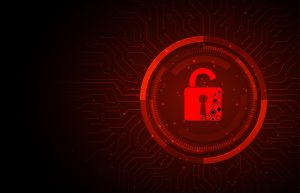From incessant pings and unnecessary notifications, Slack can be distracting at times. Here are some tips to help make Slack better for productivity and company culture.

Image: iStock/deagreez
In recent months, organizations around the globe have adopted remote work policies to mitigate the spread of COVID-19. During this time, round-the-clock Zoom meetings have replaced traditional standups and messaging services such as Slack have enhanced team communication from afar. While Slack is a helpful collaboration tool for remote teams, incessant pings and unnecessary notifications can be a drag on employee productivity. That said, we asked business professionals and experts across industries about tips to make Slack less of a nuisance during the workday.
SEE: COVID-19 workplace policy (TechRepublic Premium)
Slack in bursts to prompt efficiency
A barrage of pings in the middle of a task can be frustrating; especially if this information isn’t pertinent or could’ve waited until later. “Do not disturb” statuses and paused notifications are by no means reserved for out-of-office hours, lunch, and meetings. Extended Slack breaks specifically for personal concentration may be beneficial for some. Those who choose to go this route can then answer notifications at set times, in-essence scheduling in periods dedicated to personal flow said David Karandish, CEO of Capacity.
“In a remote setting, it can feel like notifications are the only way to stay connected to your teammates—but muting those Slack alerts is one of the easiest ways to avoid constant interruptions. By turning off notifications when working on a project, you can address those Slack notifications in transition between tasks instead of in the middle of one,” Karandish said via email.
While it may seem paradoxical, implementing a Slack blackout period across the organization may improve productivity for remote teams. Citing previous research, Anita Williams Woolley, associate professor of organizational behavior and theory at Carnegie Mellon University’s Tepper School of Business, explained that teams who utilized these intermittent blackout periods were more successful.
“A risk with using Slack (or email or chat or any other similar medium) is the possibility for constant distraction. We have found that effective teams deal with this by fostering “burstiness,” or organizing work so that they have periods in which they rapidly exchange communications interspersed with periods when they don’t communicate at all,” Woolley said via email.
Similarly, Edward Sullivan, CEO of Velocity Group, suggested that companies “slack off” occasionally throughout the workweek to allow teams to concentrate on projects.
“This not only helps the team make progress on big projects by reducing distraction and interruption, it also improves overall happiness and satisfaction by allowing people to get more into flow,” Sullivan said via email.
Maximize the standup
Slack should exist as a component of a larger communication strategy, and organizations should make sure they are appropriately leveraging all of their tools rather than relying on one in particular. Without clear guidelines in place, Slack can easily become the go-to space for information sharing even though other platforms may be better suited for certain types of communication and planning.
“Morning stand-ups also help ensure that everyone is aware of what people are working on by simply stating… today’s goals, yesterday’s accomplishments, and blockers. These three items allow everyone on the team to still be connected, understand what others are working on, and celebrate small wins without having to constantly be living in Slack,” said Andrew Gazdecki founder of MicroAcquire.
With body language, vocal cues, and more, the standup offers a richer communication format than a message-based system like Slack. While Slack is a convenient way to collaborate with coworkers in real time, workshop ideas, and pass along relevant information, it may not be the greatest place to make major organizational decisions.
“As much as possible, we try not to have important discussions on Slack, and schedule calls to make important decisions as often as we can,” said Marcel Petitpas, CEO and co-founder of Parakeeto, via email.
SEE: Zoom fatigue by the numbers: A new poll looks at video conferencing engagement (TechRepublic)
Foster relationships with clear guidelines
With the ability to set channels for dedicated topics such as hobbies, pets, sports, and more, Slack also offers tremendous team-building opportunities; especially among remote teams. However, these channels also run the risk of introducing potential conflict. As a result, organizations should also set expectations and rules regarding Slack channels.
“As humans we talk about politics, sports, and so many topics besides work that present the opportunity to be divisive. Any company’s mission should be facilitating diverse spaces that allow both personal and work conversations. This means creating fun or informal spaces coexisting with channels for work-oriented projects, and making it clear which is the right home for each conversation,” said Fernando Matzkin, chief business officer of North America at Globant via email.
SEE: Tableau business analytics: Tips and tricks (free PDF) (TechRepublic)
Remember the basics
In a traditional office, co-workers are able to physically see other employees throughout the workday. This allows team members to more readily gauge when a person is in the middle of a task or away from the desk. Simple moves such as setting one’s status throughout the day and snoozing notifications at the end of the day will help minimize potential intrusions.
In the age of telecommuting, the line between work and home blurs. Setting Slack status updates and snooze notifications can assist employees establish a healthier work-life balance. Remember, effective communication is a two-way street and coworkers don’t know they are being a distraction if they believe someone is available for a quick chat.
“Use statuses to signal you have signed off for the day. (And be cognizant if you see someone has signed off),” said Anna McVeigh-Murphy, marketing manager at Curacubby.
Oliver Baker, the co-founder of Intelvita, suggested taking advantage of Slack’s Highlights feature. This allows workers to set notifications for specific keywords and in messages, minimizing the need to sift through dozens of messages in crowded group chats or channels for relevant information.
Enabling automatic Slack status updates is another great way to improve Slack. Lauren Torregrossa, a media relations manager at CareerPlug, suggested syncing Slack with Google Calendar. Once Slack is synced with Google Calendar, a person’s Slack status will automatically update once a calendar event starts and clear this status at the end of the meeting. This reduces the need to manually set statuses throughout the workday.
Also see
Source of Article




